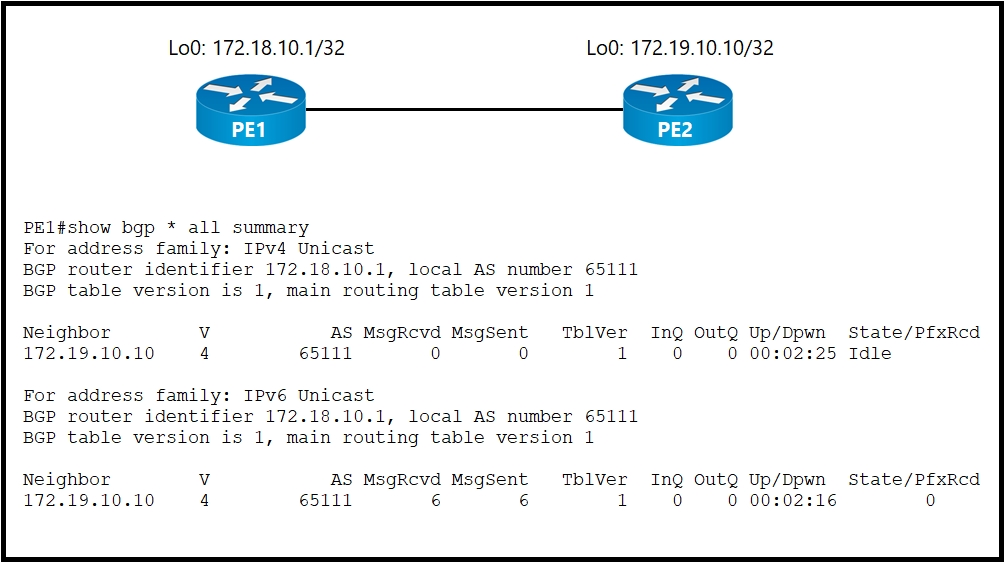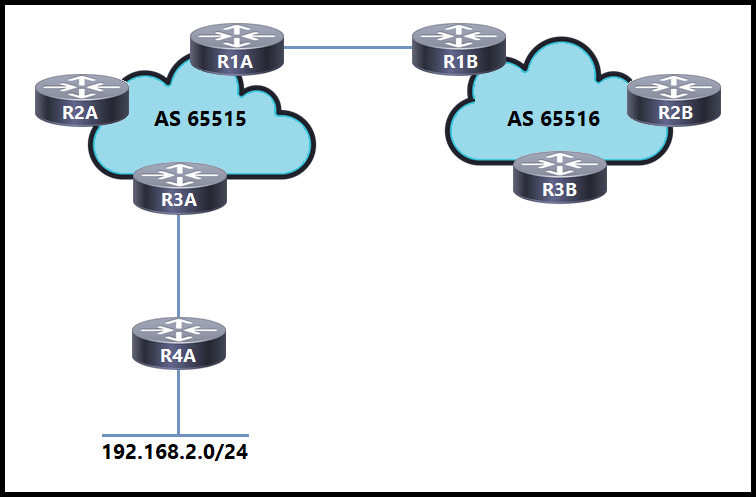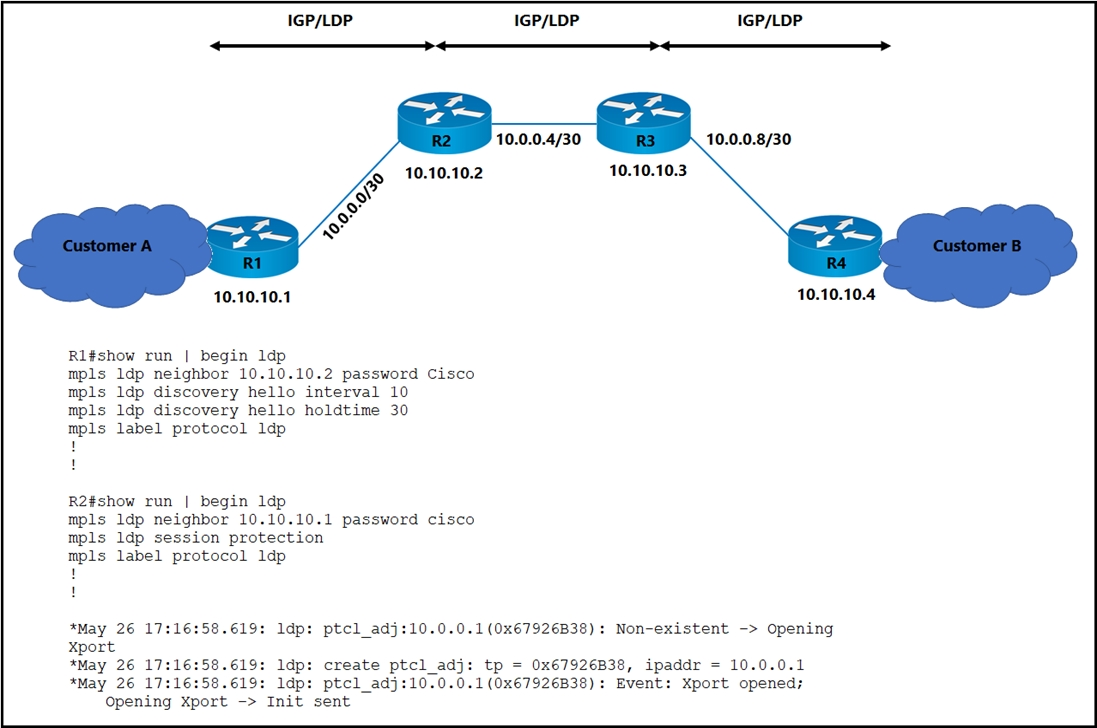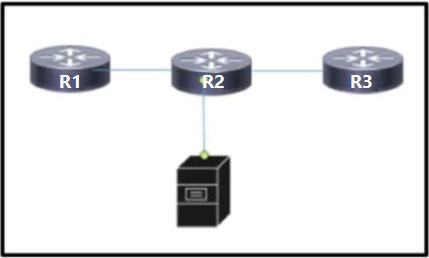
Refer to the exhibit. An administrator working for large ISP must connect its two POP sites to provide internet connectivity to its customers. Which configuration must the administrator perform to establish an iBGP session between routers PE1 on POP site 1 and PE2 on POP site 2?
B

Refer to the exhibit. After a networking team configured this MPLS topology, the supervisor wants to view MPLS labels to verify the path that packets take from router R1 to router R7. The team already issued an ICMP ping to verify connectivity between the devices. Which task must the team perform to allow the supervisor to view the label switch path?
A
What are two features of stateful NAT64? (Choose two.)
AB
Reference:
https://www.cisco.com/c/en/us/td/docs/ios-xml/ios/ipaddr_nat/configuration/xe-16/nat-xe-16-book/iadnat-stateful-nat64.html

Refer to the exhibit. An engineer working for a private telecommunication company with an employee id: 3414:81:713 is implementing this network, in which:
✑ Routers R1A and R1B are eBGP neighbors.
✑ iBGP is configured within AS 65515 and AS 65516.
✑ Network 192.168.2.0/24 is shared with AS 65516.
✑ Router R3A has an iBGP relationship with router R2A only.
✑ Router R2A has an iBGP relationship with routers R1A and R3A.
Which additional task must the engineer perform to complete the configuration?
C

Refer to the exhibit. The operations team is implementing an LDP-based configuration in the service provider core network with these requirements:
✑ R1 must establish LDP peering with the loopback IP address as its Router-ID.
✑ Session protection must be enabled on R2.
How must the team update the network configuration to successfully enable LDP peering between R1 and R2?
B
A network engineer is testing an automation platform that interacts with Cisco networking devices via NETCONF over SSH. In accordance with internal security requirements:
✑ NETCONF sessions are permitted only from trusted sources in the 172.16.20.0/24 subnet.
✑ CLI SSH access is permitted from any source.
Which configuration must the engineer apply on R1?
D
A network architect decides to expand the scope of the multicast deployment within the company network. The network is already using PIM-SM with a static RP that supports a high-bandwidth, video-based training application that is heavily used by the employees, but excessive bandwidth usage is a concern. How must the engineer update the network to provide a more efficient multicast implementation?
C

Refer to the exhibit. Users on a network connected to router R3 report slow speeds when they connect to the server connected to R2. After analyzing traffic on the network, a network engineer identified congestion on the link between R2 and R3 as the cause. Which QoS service must the engineer implement to drop traffic on the link when it exceeds a configured threshold?
D
What is the role of NSO?
B
An engineer is moving all of an organization's Cisco IOS XE BGP routers to the address-family identifier format. Which command should be used to perform this upgrade quickly with the minimum service disruption?
B